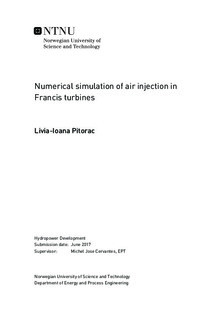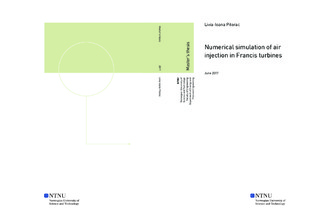| dc.description.abstract | With the increasing use of renewable energy such as wind and solar, the power market operation is changing. The energy producers using classic resources have to adapt. This applies to hydropower plants as well, which are more often operated away from their best efficiency point, involving a significant increase in load variations, as well as start/stop to regulate the grid frequency. During turbine operations away from the best efficiency point and at part load, the vortex breakdown phenomenon encounters in the draft tube, which lead to the formation of a rotating vortex rope (RVR). The RVR is the result of a flow instability associated with low-frequency pressure pulsations, noise and vibration, limiting the operational range of the turbine. Various methods for RVR mitigation have been investigated for many years, but so far, none has yielded outstanding results. The most popular method for decreasing pressure pulsations is air injection. Air injection methods can be divided into passive and active.
This study focuses on setting the basis for a new active control method (varying air injection), using Computational Fluid Dynamics (CFD) modelling. Among the possible benefits of implementing pulsated air injection are, decreasing the necessary air quantity, and the mitigation or even cancellation of the pressure pulsations due to RVR.
First, a numerical model is developed for part load operation, and validated using measurements performed for the Francis-99 workshop. Next, standard air injection methods are compared, for which it is determined that the pressure amplitude associated with the RVR decreases by more than 50% when a constant air injection of 1% is applied. Finally, a possible method for determining the frequency, phase, and amplitude for varying air injection is described. It is shown that the system responds four times slower to air nozzle opening than to air nozzle closing, and that a pulsated air frequency equal to the RVR frequency is optimal. As for the air fluctuation, only a small variation is determined to be beneficial to the system (between 0.9 and 1% in this case). | |

